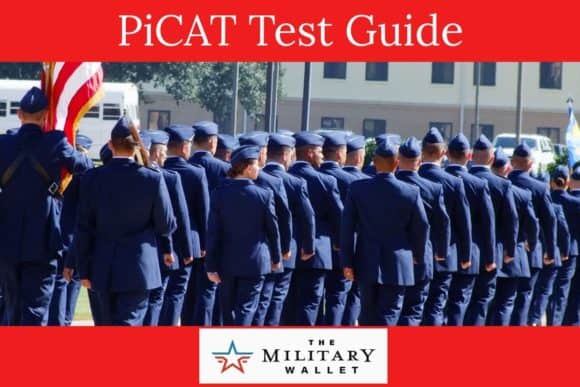Wondering what the difference between the PiCAT and the ASVAB is? Or why you should care? You’re not alone. That’s one of the most routine queries asked by people interested in joining the military. Take a look at this guide to help answer your questions about the PiCAT test, your first step in enlisting in the military.
What Is the PiCAT?
PiCAT stands for Prescreen Internet Computerized Adaptive Test. This is an essential first step for anyone interested in enlisting in the military. It’s an untimed test that’s self-administered.
The PiCAT is a full version of the Armed Services Vocational Aptitude Battery (ASVAB) and is open to anyone who has never taken the ASVAB.
You take the PiCAT before going to a Military Entry Processing Site (MEPS) – a location that will help you finalize the enlistment process. The test helps predict future military training and job options. A higher PiCAT score usually means that you’ll have access to the more desirable jobs within the military.
How Does the PiCAT Test Work?
Your recruiter will use an application to register you. You receive a link that’s valid for thirty days, which gives you the freedom to choose the best time and place to take the PiCAT. Once you log in, you have 48 hours to complete the exam. Then, your recruiter accesses your scores.
Once you’ve completed the exam, you’ll need to sit for an additional test. This 25-30-minute proctored verification test helps confirm your score and results and is used to validate your PiCAT. If you’re not able to sit for an additional exam, your PiCAT scores are considered invalid, and you’ll need to take the ASVAB. So be sure you account for this extra step to save yourself time and energy.
Your PiCAT score provides you with your Armed Forces Qualification Test (AFQT) score, which qualifies you for enlistment into any branch of service.
Why Take the PiCAT?
Unlike the ASVAB that requires you to travel to a specific location, the PiCAT can be taken anywhere. This alternative to the current ASVAB testing procedure doesn’t waste your time or your recruiters’. The PiCAT speeds up the enlistment process considerably, making it much more efficient than the traditional approach.
Once your PiCAT scores are validated, they become your official ASVAB score.
PiCAT Scores + Military Aptitude
The PiCAT measures your general education knowledge and your aptitude for specific occupations within the military. Your PiCAT score is a composite of your results including:
- Arithmetic Reasoning
- Math Knowledge
- Paragraph Comprehension
- Word Knowledge
Each branch of the military has specific requirements for the score you need to enter, so it’s essential to know your goal before sitting for the PiCAT. All branches accept AFQT scores between 31 and 40, but you should aim for a score of at least 50. There is no limit to the number of times you can take the PiCAT, so if you’re unhappy with your final score, you can retake it.
Your scores determine your aptitude, and for each job in the military, you’ll need to meet minimum score guidelines. For example, if you’re interested in clerical work, you’ll need a good clerical (CL) score. Your aptitude for CL work is a sum of your scores in Word Knowledge, Paragraph Comprehension, Arithmetic Reasoning, and Mathematics Knowledge.
How to Prepare for the PiCAT Test
If you’re considering taking the PiCAT, you should approach your study plan to prepare for the ASVAB. There are several free resources available online and at community libraries, including TheMilitaryWallet.com’s guide. It’s a good idea to take several practice tests before you take the actual exam. Practice tests will help highlight areas that might need some refreshers, like specific math equations or vocabulary lists.
Recent high school graduates or those who have recently taken the SATs will probably find the general education test of the PiCAT pretty similar to other standardized tests. However, if it’s been some time since you’ve been inside a classroom, make sure you know your weaknesses and work on them before you take your exam. Remember that the PiCAT will, in part, determine your career in the military, so it’s imperative to do well.
Key Reminders
Because the PiCAT is a self-administered alternative to the ASVAB that you can take at a time and place of your choosing we think it is a fantastic option.
- Expedite the enlistment process
- Plan to take a timed and supervised verification test at a MEPS
- PiCAT results help determine which career field is best for you once you enlist – so preparation is key!




About the comments on this site:
These responses are not provided or commissioned by the bank advertiser. Responses have not been reviewed, approved or otherwise endorsed by the bank advertiser. It is not the bank advertiser’s responsibility to ensure all posts and/or questions are answered.